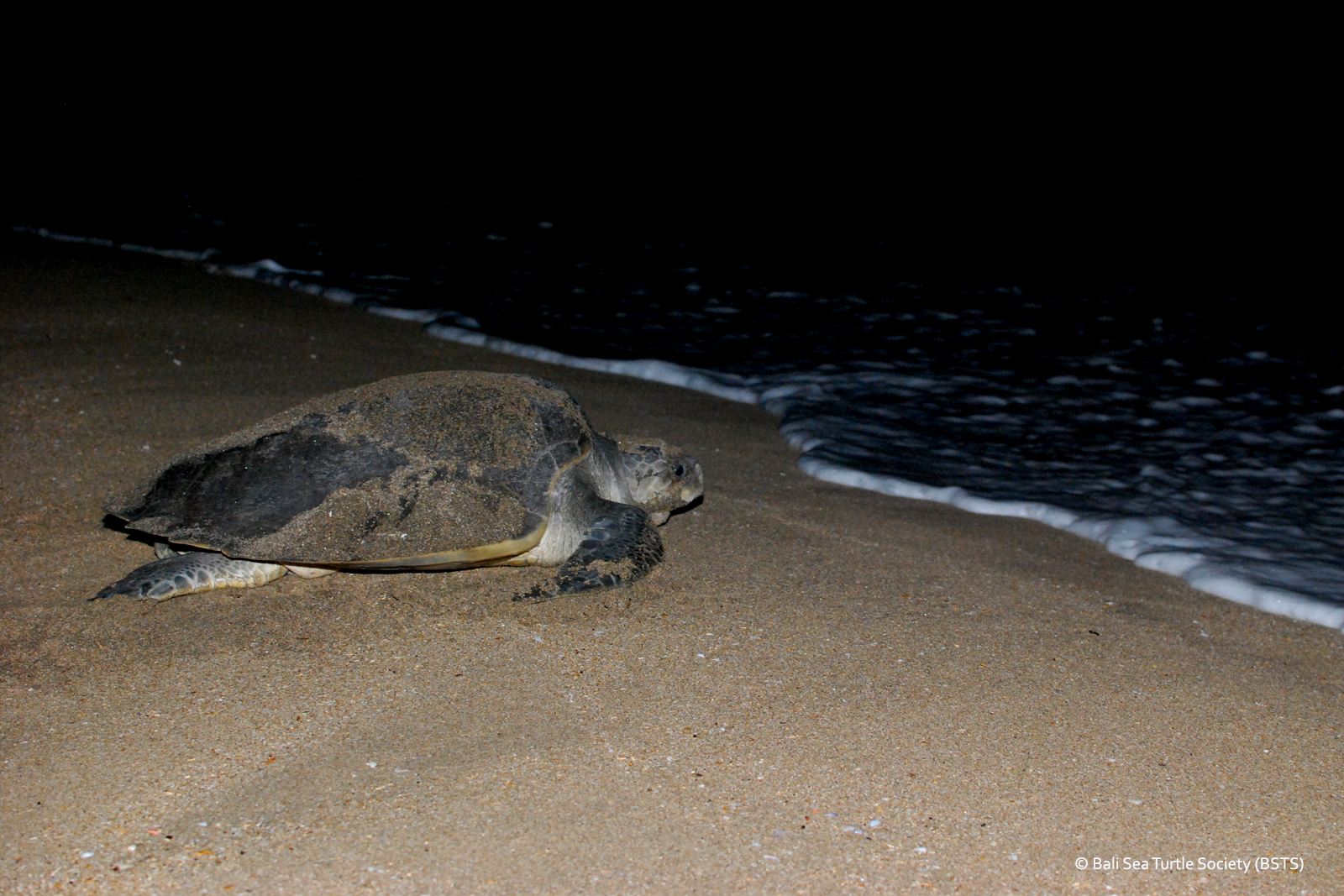Hatchlings come out at night to reduce the danger from predator as well as to avoid the possibility of dehydration. Hatchlings will stay within the egg for about 2 months and after cracking the egg shell, start its journey to get out of its nest as a group.
If the hatchlings at the top of the nest feel warmer sand, (meaning the sun is still shining), the activity will stop and start again only at night when temperatures are cooler. When the hatchlings out of the nest during the day, they are in danger of predation by crabs, birds, foxes and other wild animals during his journey to the ocean. Once they are underwater they try to avoid other predators, which include fish and sharks.
The hatchlings swim faster, until they get swept by waves that take them further out to sea. Soon after hatched, the hatchlings will swim into the sea. The hatchlings are rarely seen again for several years afterward. Within this period they will follow the waves and eat plankton near the sea surface. As they are rare observation about this period, there is very little information available regarding the “lost year”. However, the young turtle may stay in one feeding area for several years before they move on to other places. Changes may happen during this phase that may last for 10 to 20 years.
Turtles will breed between 30 to 50 years of age and in every two to eight years, depend on the condition of each animal. Adult turtles will migrate to breed from their feeding places to their nesting beaches. The distance of migration is anywhere between 5 to 3,000 km. The number of migrations conducted by a turtle during its lifetime is not known for sure. However, it seems that they will breed during periods of tens of years. After mating with several males, a female turtle will swim to their nesting sites, crawl slowly (using its front flippers) up the beach and prepare its nest prior to egg laying. Normally, turtles start laying at night time and will finish before the sunrise. Female turtles will choose a beach that is clean of any garbages.
A turtles uses its back flippers to dig, creating holes of about 50 to 70 cm in depth. If the digging process is successful, the turtles will lay between 80 to 120 eggs the size of a ping pong ball. Sea turtles are very easily distracted when it comes to the beach or during preparing the nest. Human movement and the light rays will make it return to the sea without laying any eggs. When a turtle begins laying, she will be very distressed. By using its rear flippers a turtle covers its nest, and with its front fins, add sand to a hidden nest, before returning to the sea having spent a very tiring few hours.







